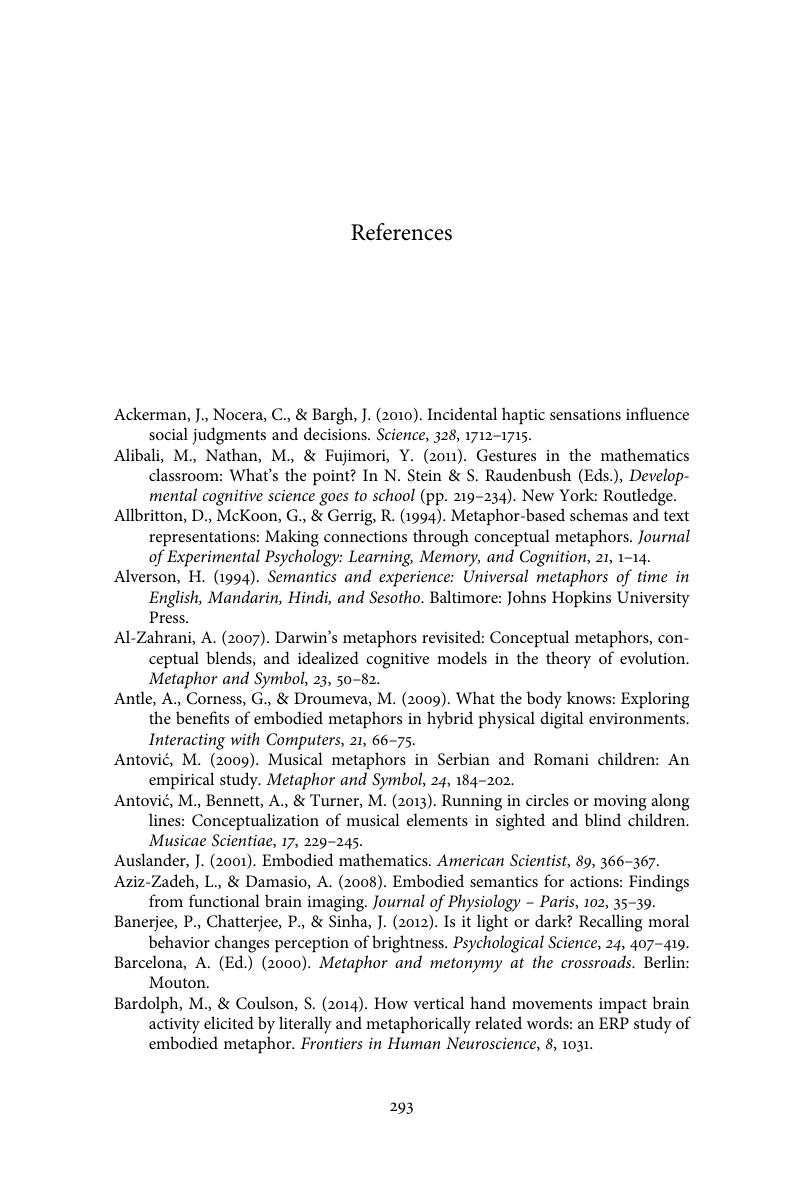Book contents
- Metaphor Wars
- Metaphor Wars
- Copyright page
- Dedication
- Contents
- Figures
- Tables
- 1 What Are Metaphor Wars?
- 2 Conceptual Metaphor Analysis
- 3 Identifying Metaphors in Language
- 4 Inferring Conceptual Metaphors from Language
- 5 Psychology of Conceptual Metaphors in Verbal Metaphor Use
- 6 Conceptual Metaphors in Multimodal Experience
- 7 Conclusion and the Future
- Notes
- References
- Index
- References
References
Published online by Cambridge University Press: 01 June 2017
- Metaphor Wars
- Metaphor Wars
- Copyright page
- Dedication
- Contents
- Figures
- Tables
- 1 What Are Metaphor Wars?
- 2 Conceptual Metaphor Analysis
- 3 Identifying Metaphors in Language
- 4 Inferring Conceptual Metaphors from Language
- 5 Psychology of Conceptual Metaphors in Verbal Metaphor Use
- 6 Conceptual Metaphors in Multimodal Experience
- 7 Conclusion and the Future
- Notes
- References
- Index
- References
Summary

- Type
- Chapter
- Information
- Metaphor WarsConceptual Metaphors in Human Life, pp. 293 - 318Publisher: Cambridge University PressPrint publication year: 2017



